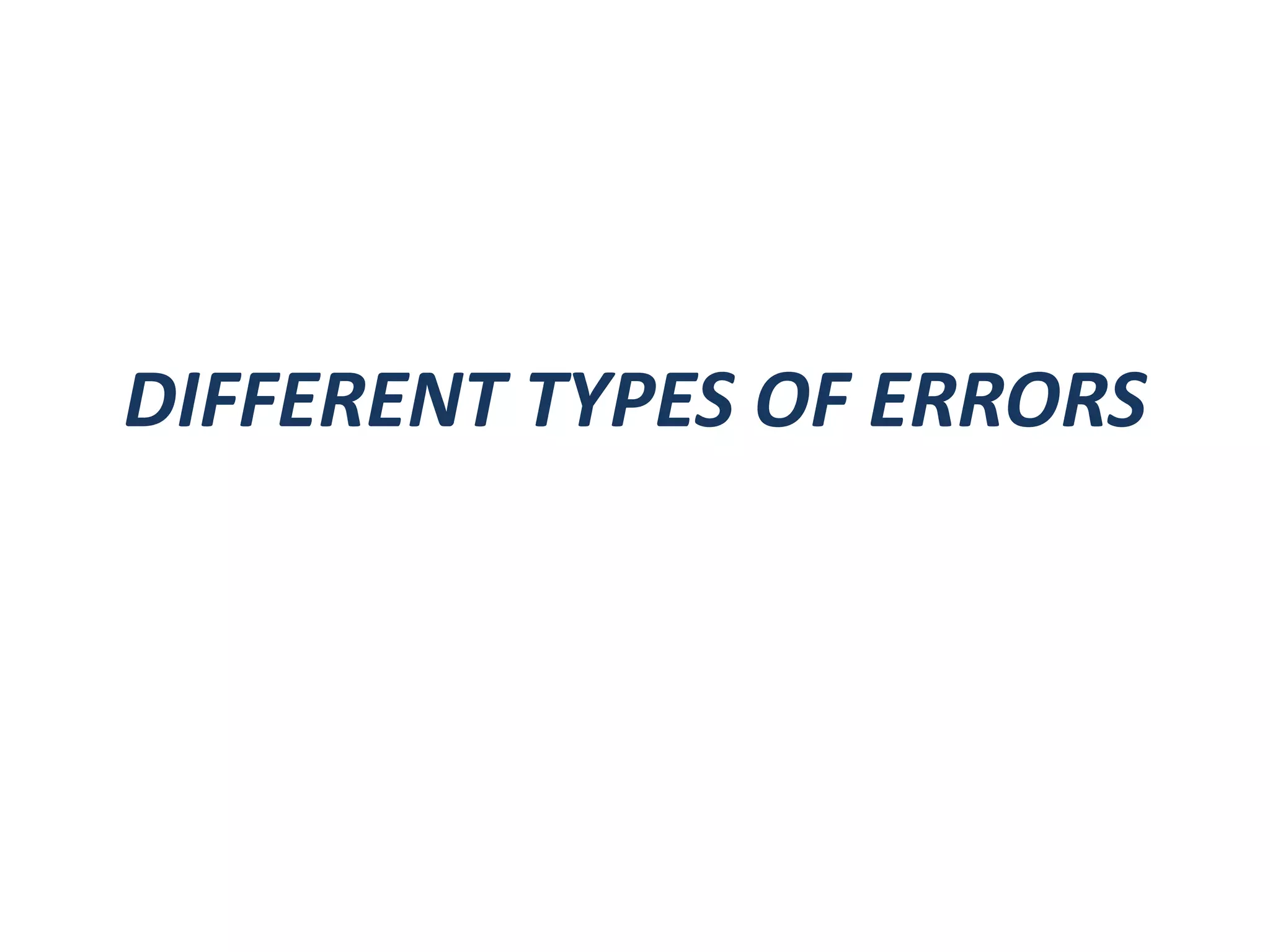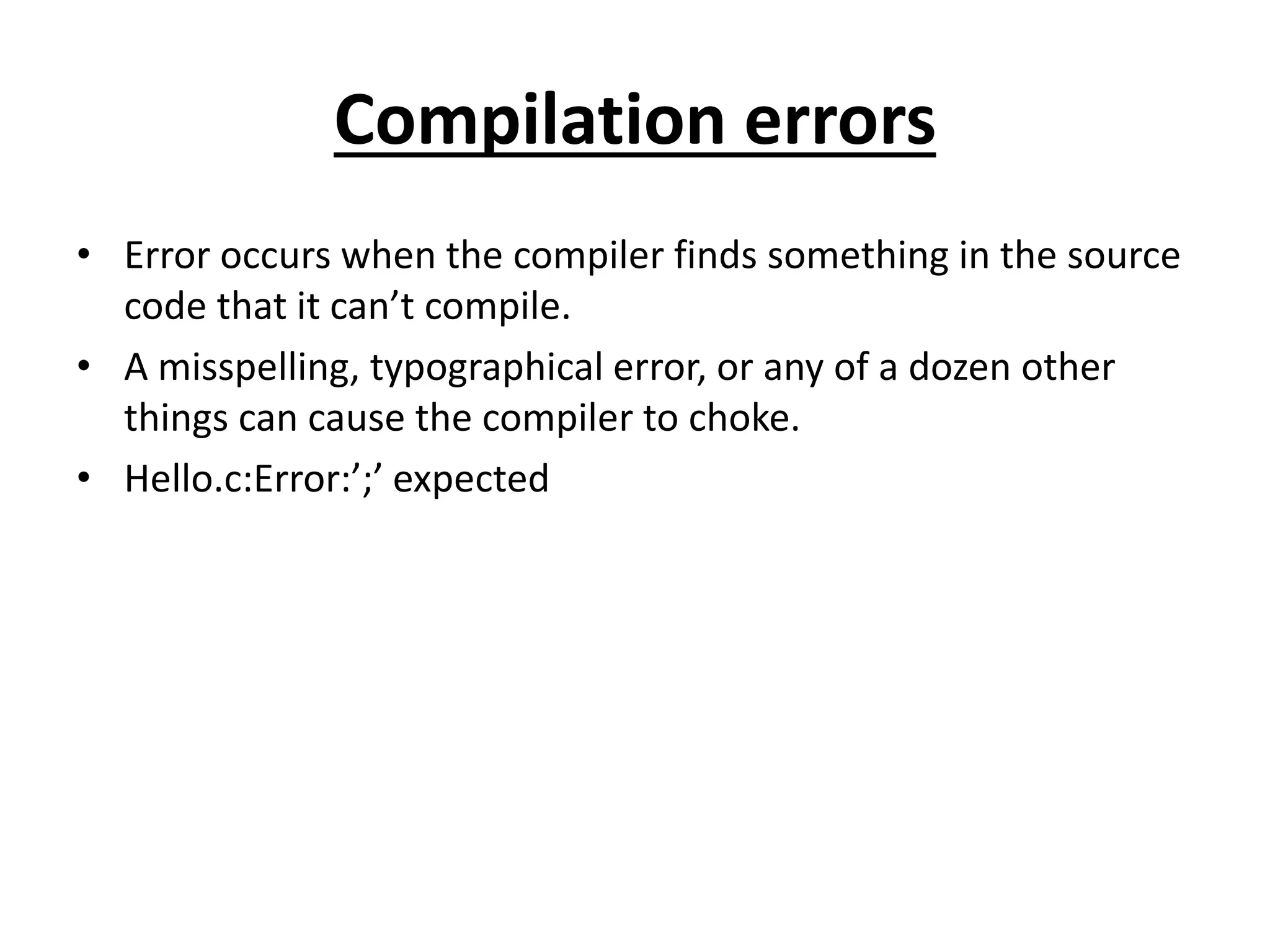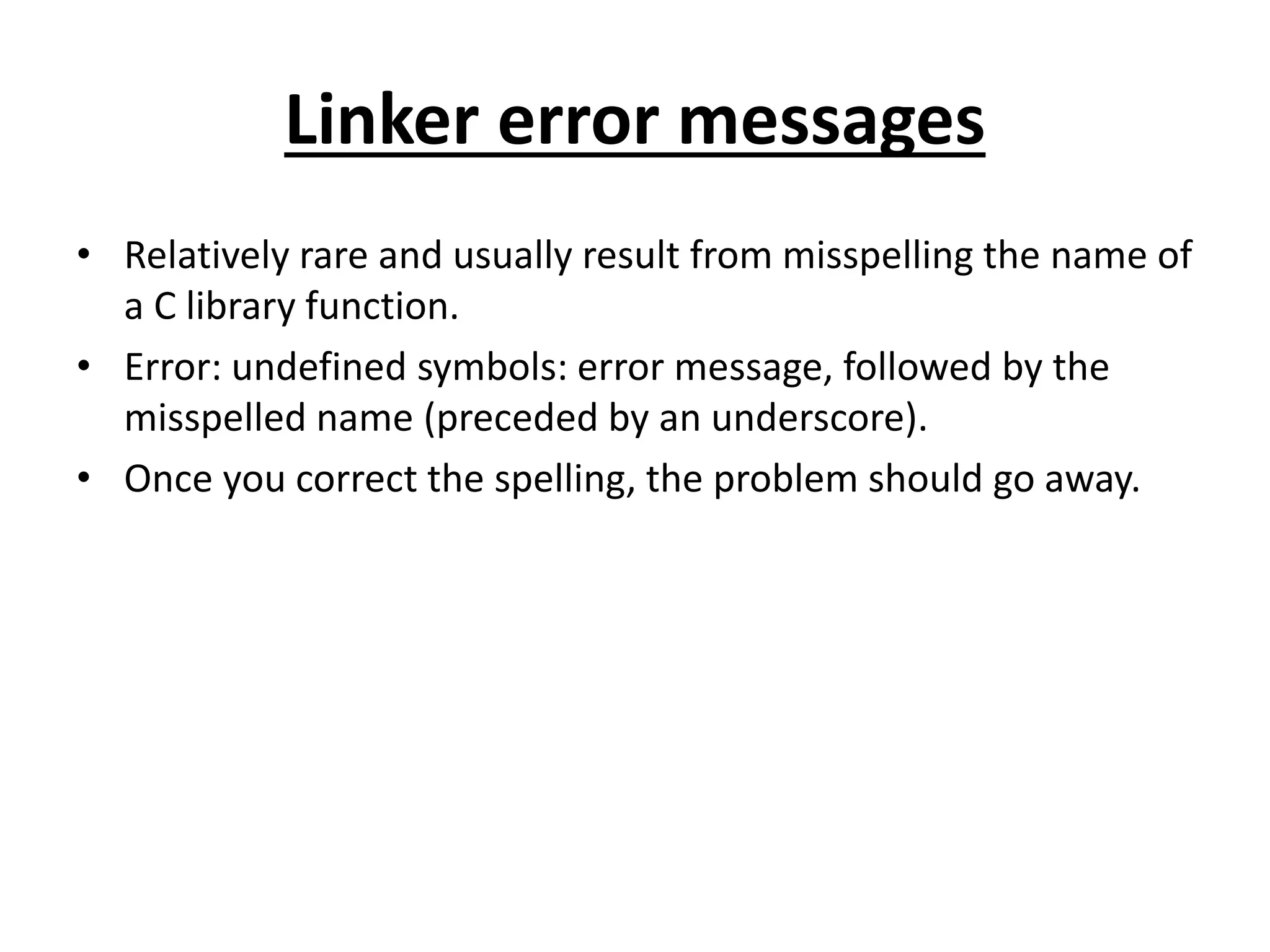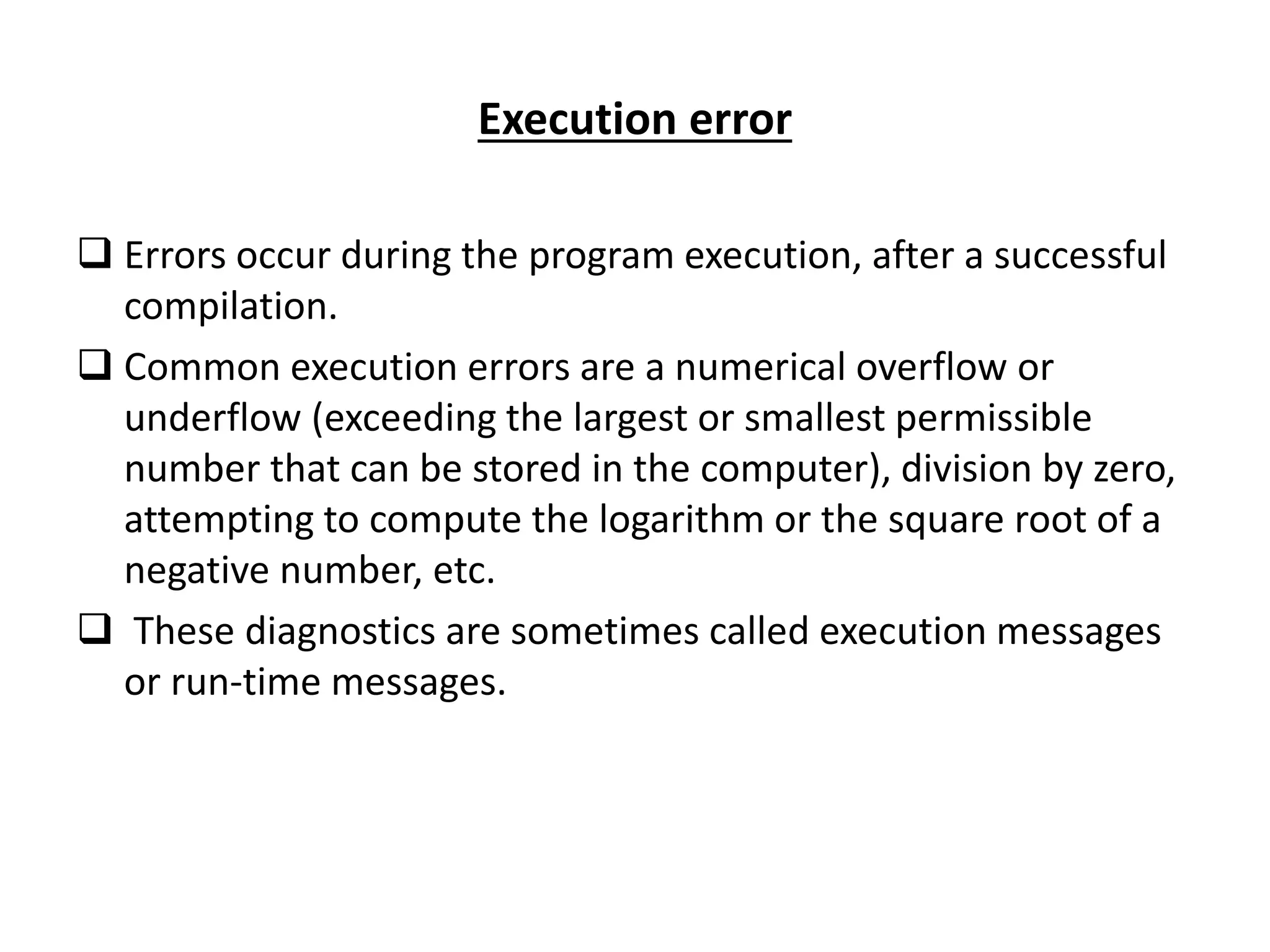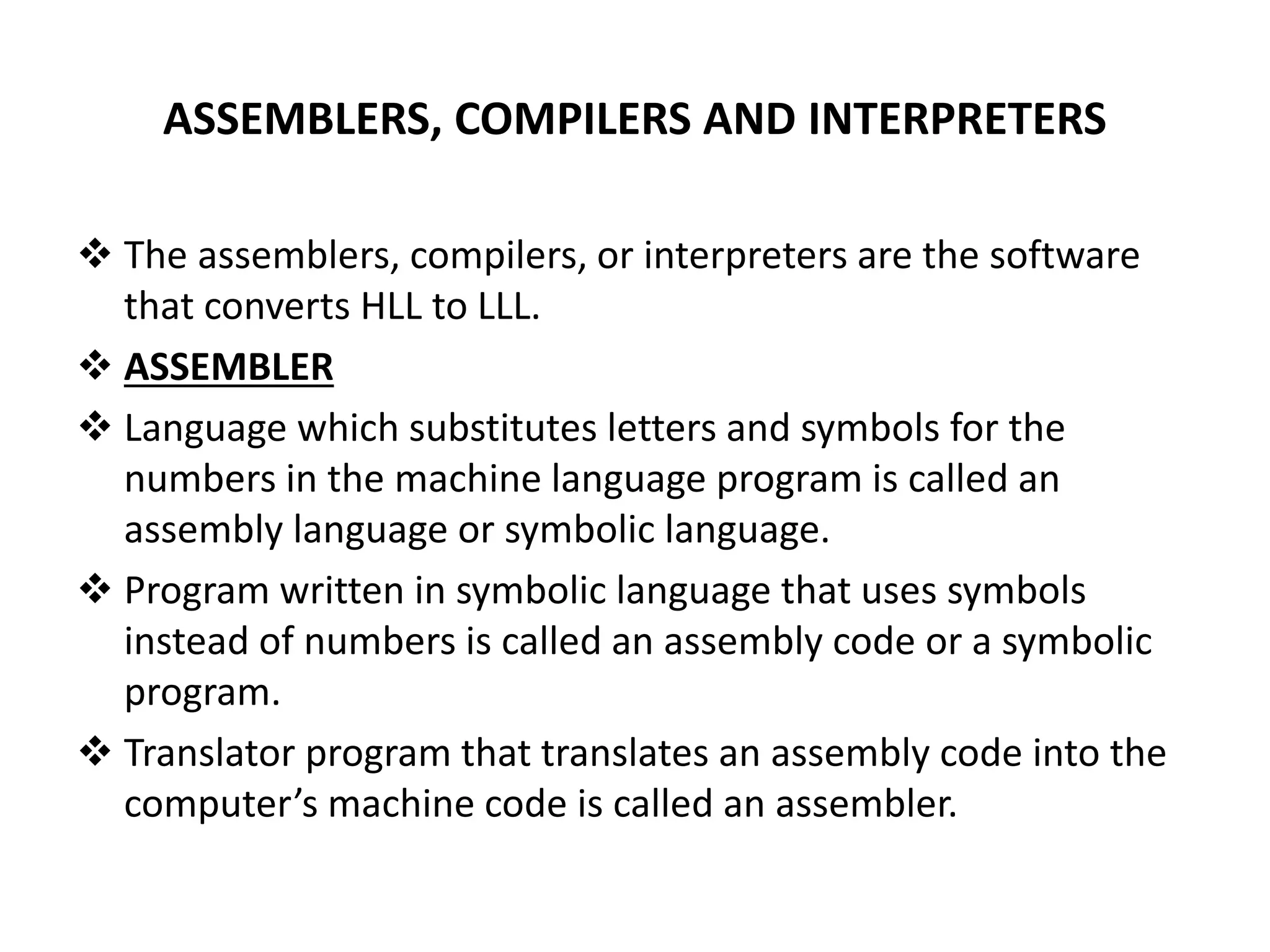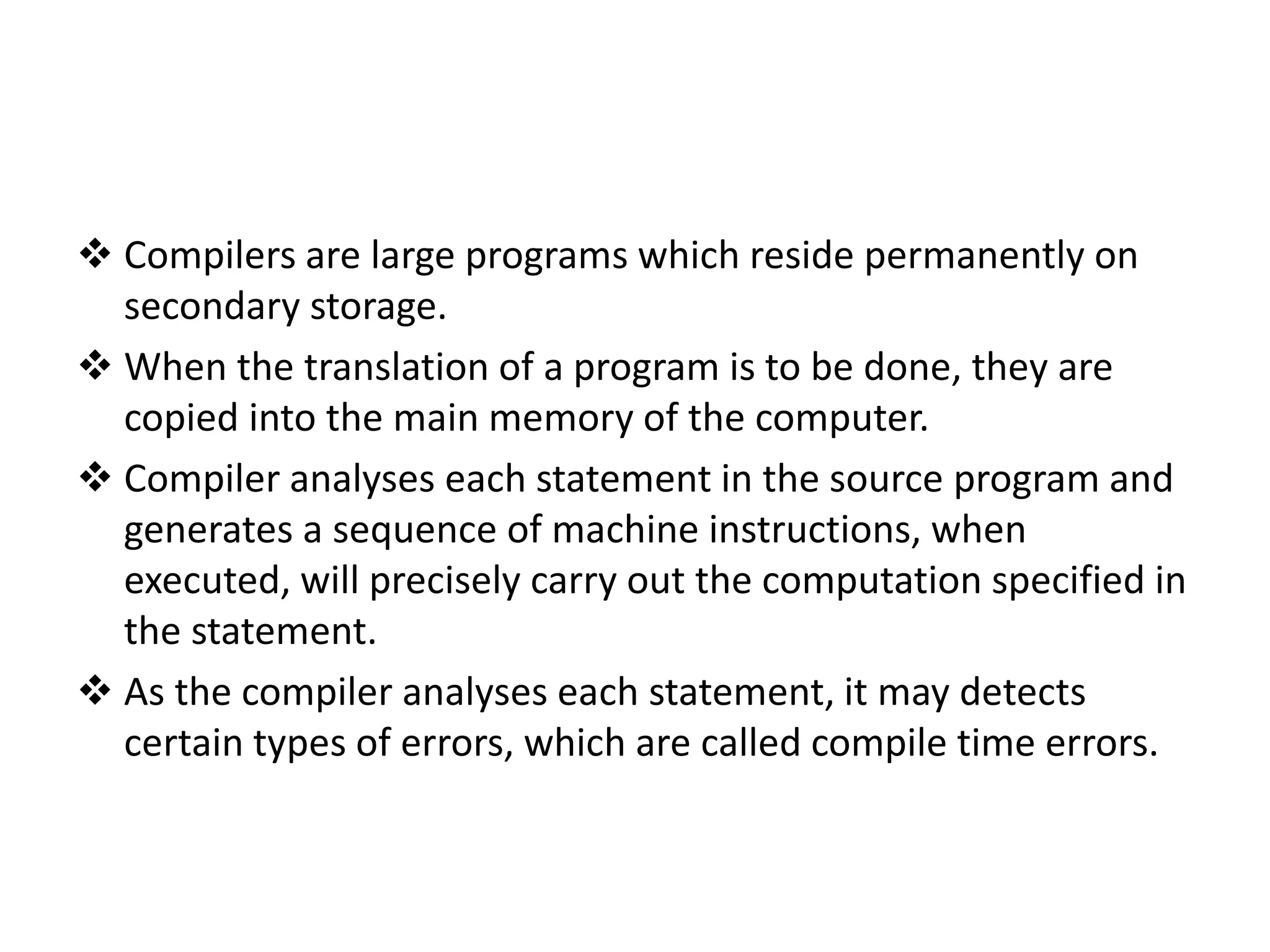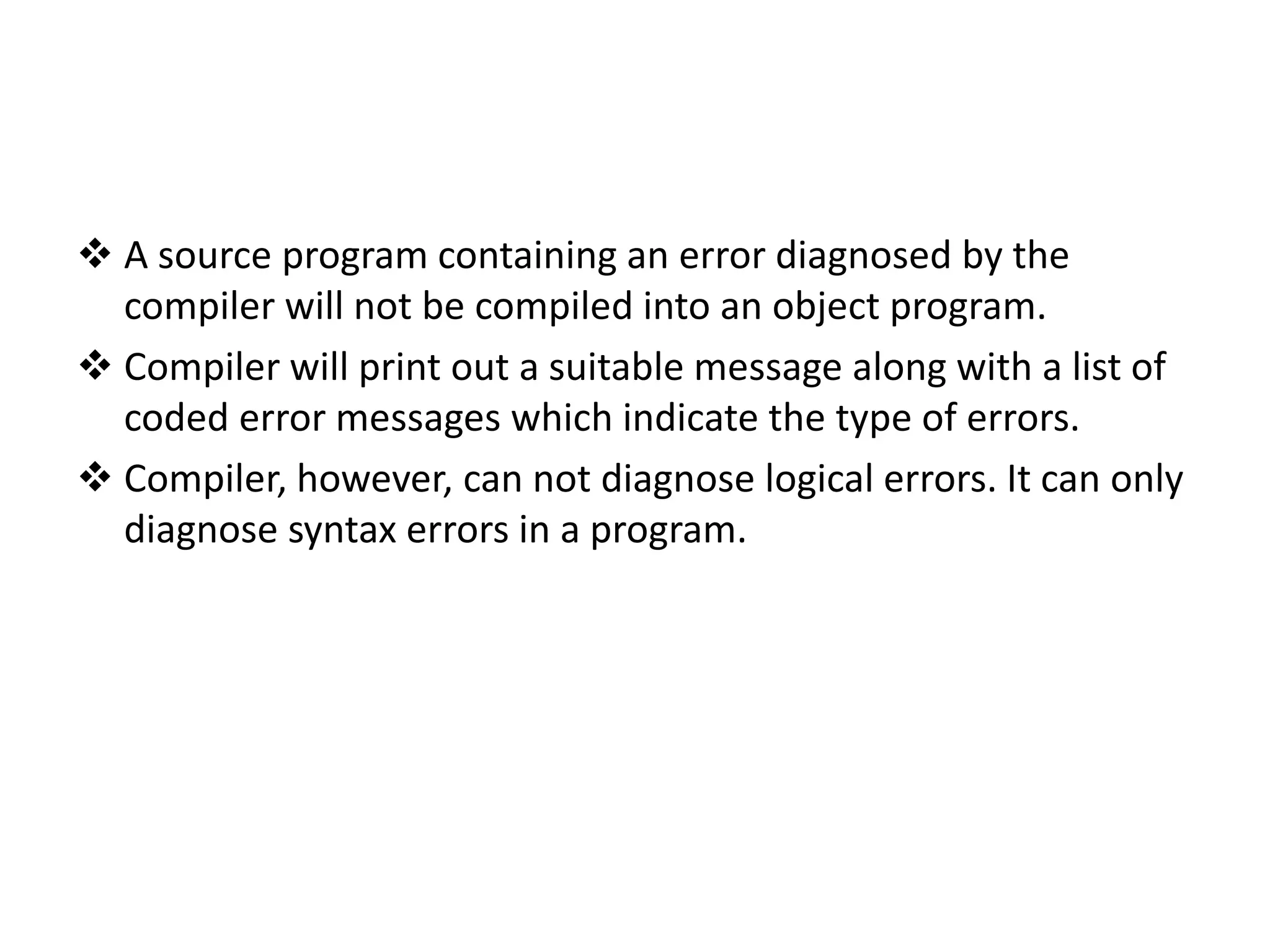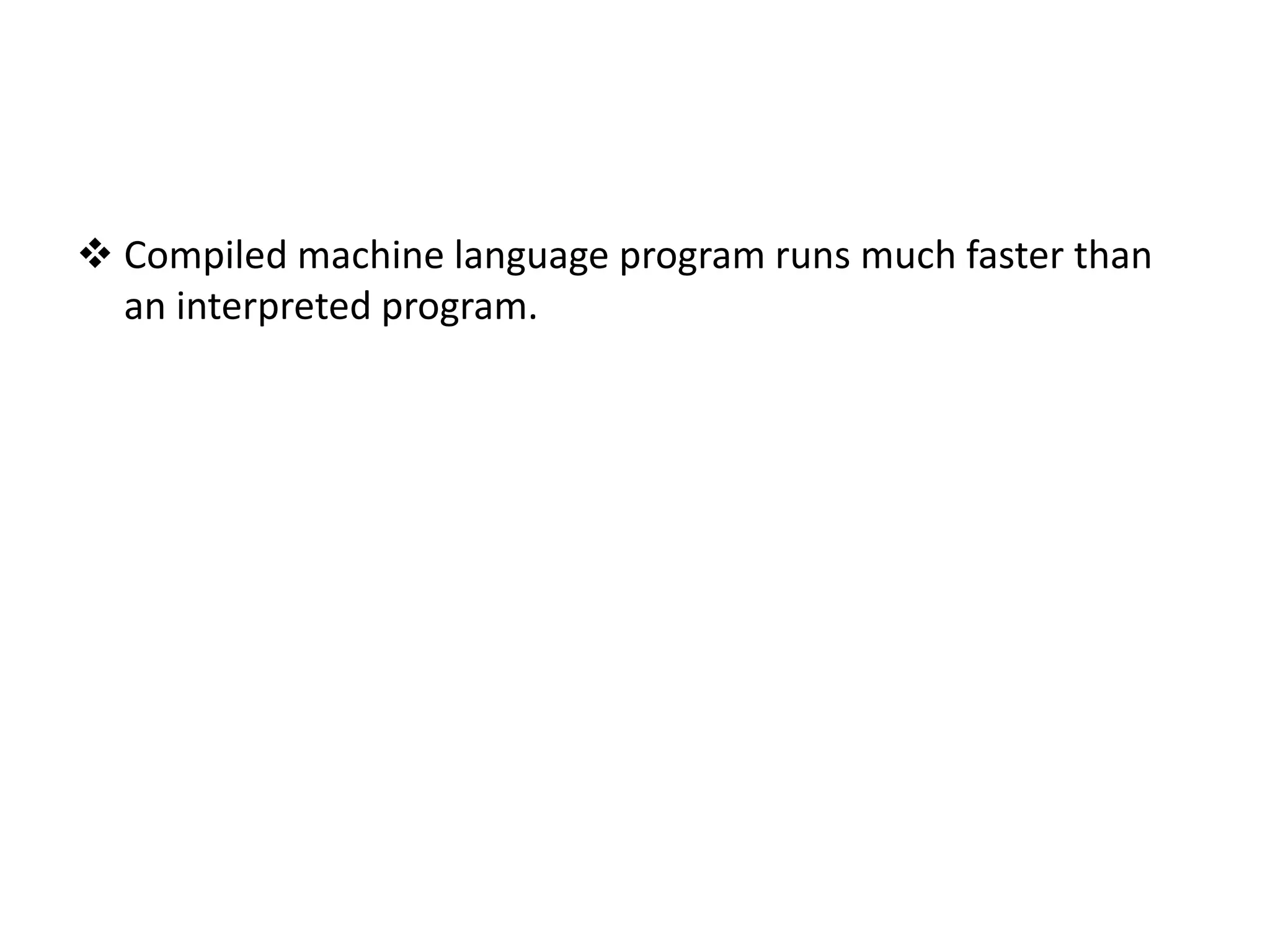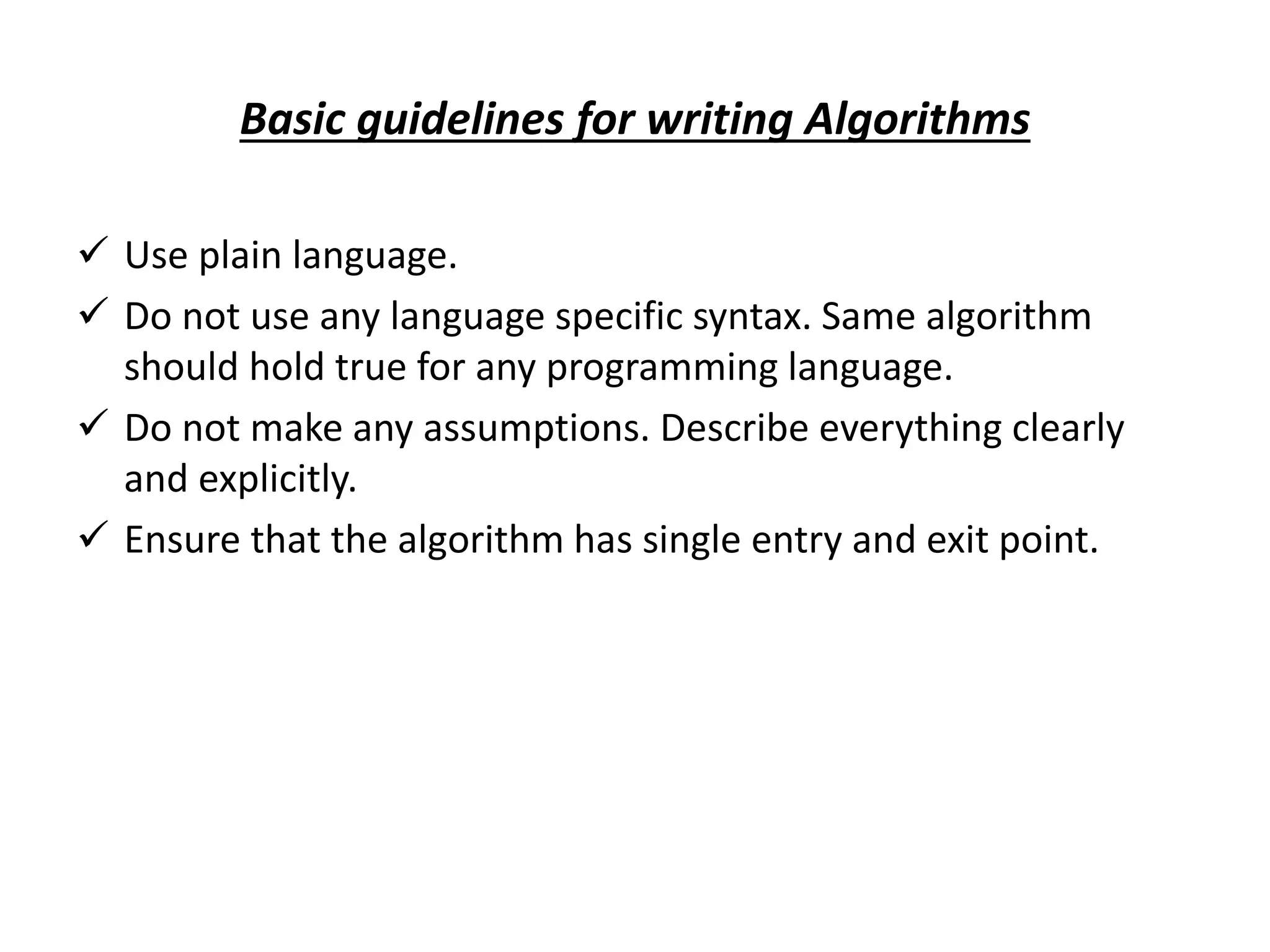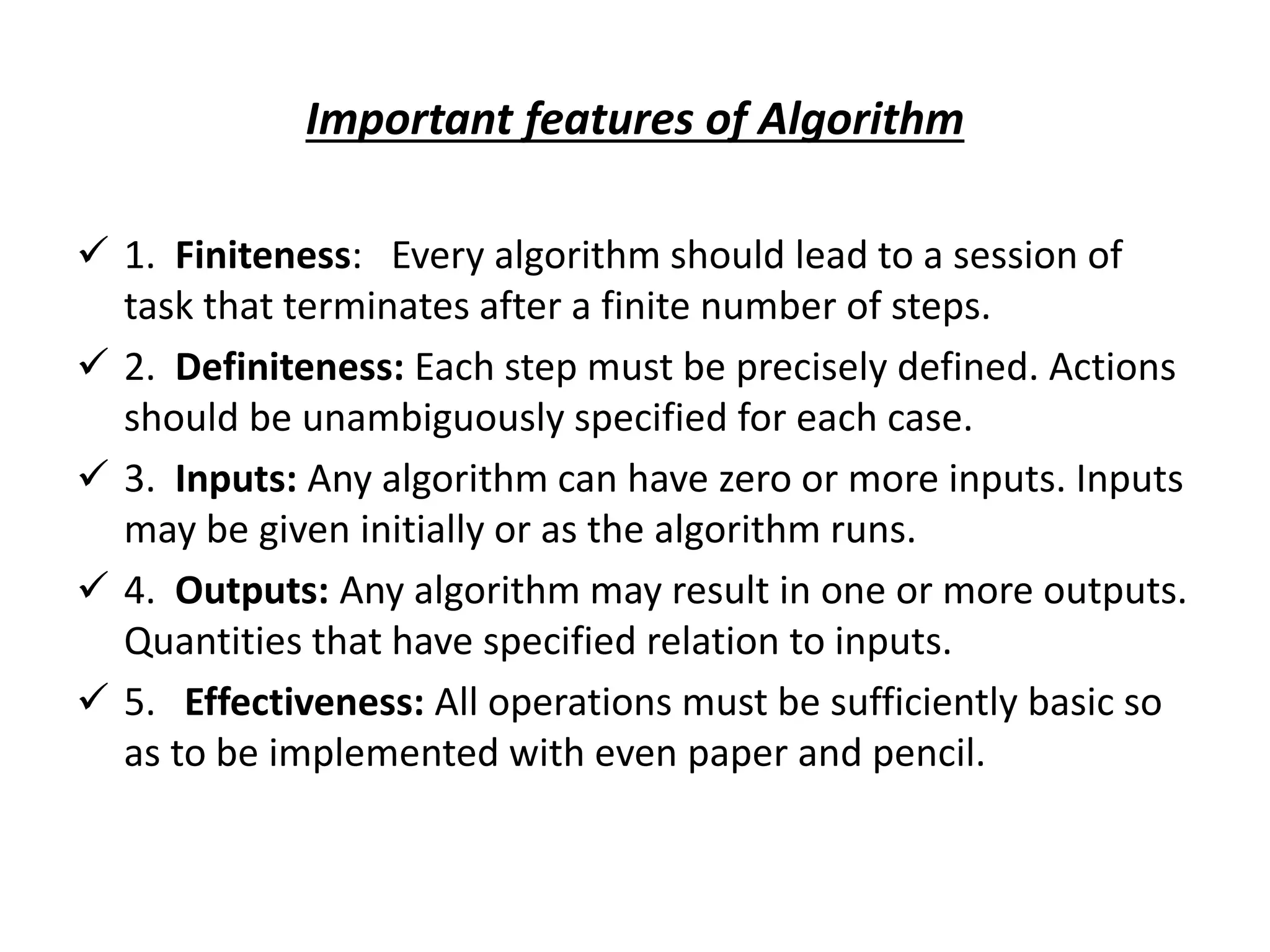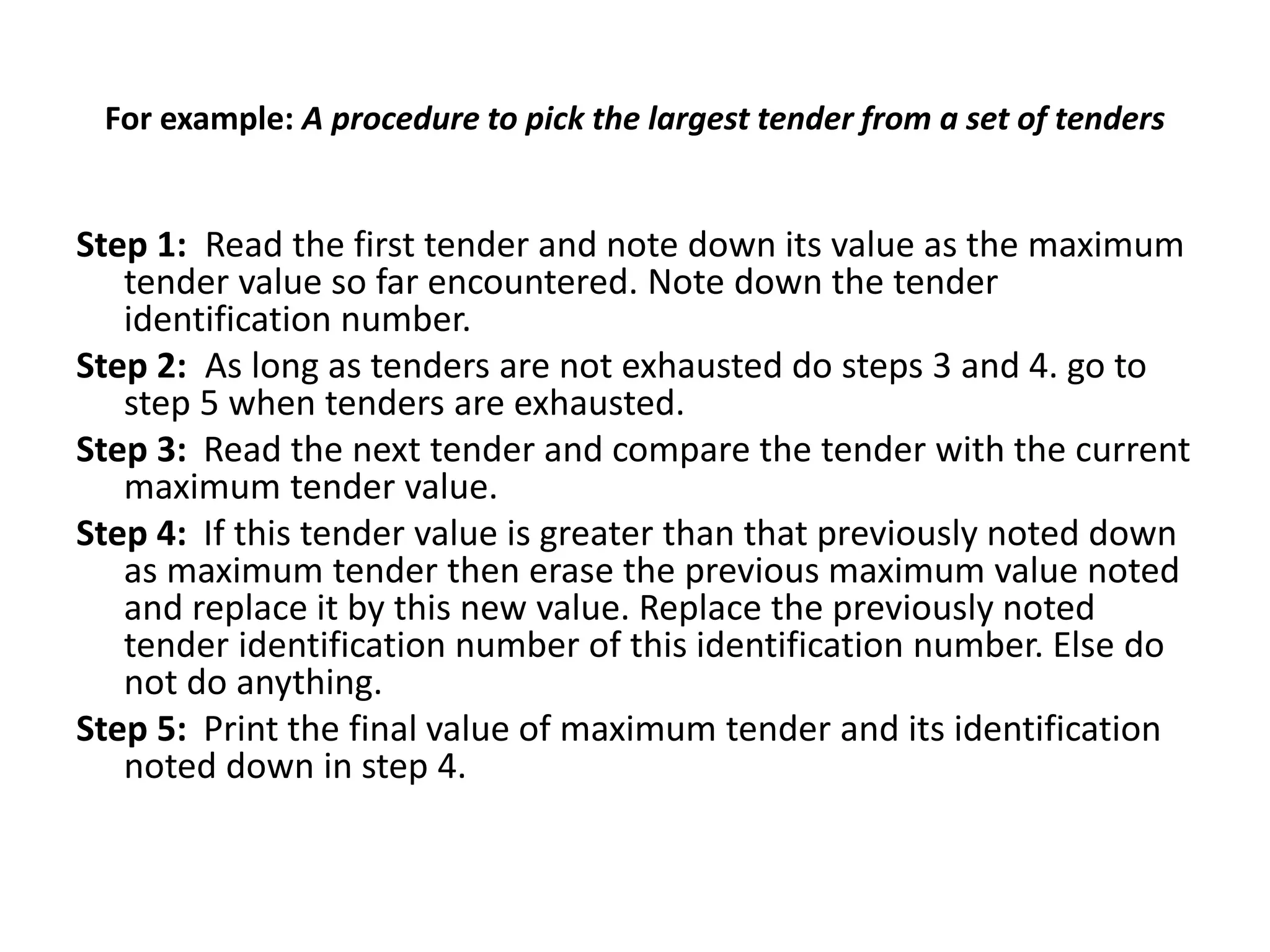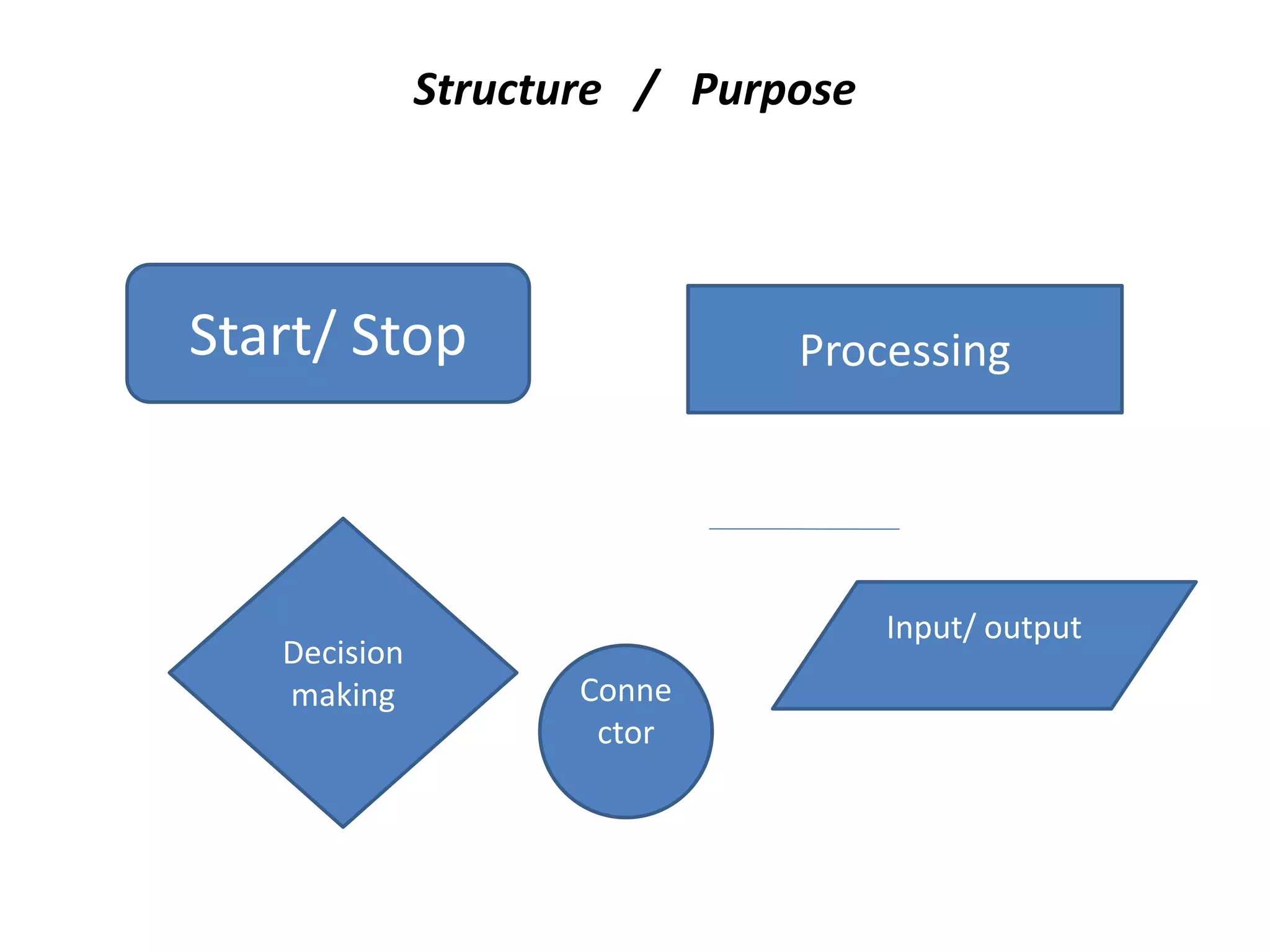This document discusses different types of errors that can occur in programming: 1) Compilation errors occur when the compiler cannot compile source code due to issues like typos. 2) Linker errors are rare and usually due to misspelling library function names. 3) Execution errors happen at runtime from issues like division by zero. 4) Logical errors are mistakes in program logic not caught by the compiler that result in unexpected output.
